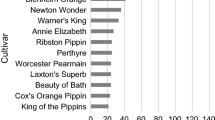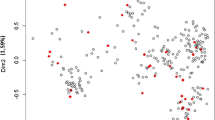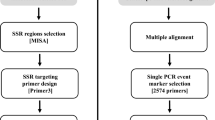Abstract.
The aim of this study was to evaluate the suitability of sequence tagged microsatellite site (STMS) markers for varietal identification and discrimination in tomato. For this purpose, a set of 20 STMS primer pairs was used to construct a database containing the molecular description of the most common varieties (>500) of tomato grown in Europe. The database was built and tested by a consortium of five European laboratories each using a different STMS detection system. In this way, it could be demonstrated that the STMS markers and database were suitable for use in network activities where a common database is being established on a continuing basis with data from different laboratories.
Microsatellite polymorphism in tomato was found to be relatively low. The number of alleles per locus ranged from 2 to 8 with an average of 4.7 alleles per locus. Nevertheless, more than 90% of the varieties had different microsatellite profiles. A "blind testing" exercise showed that in general, identification of unknown samples (or detecting the most similar variety) with the 20 markers and the database was relatively easy for homogeneous varieties but less certain with heterogeneous varieties when using pools of 6 individuals.
Similar content being viewed by others
Author information
Authors and Affiliations
Additional information
Electronic Publication
Rights and permissions
About this article
Cite this article
Bredemeijer, .G., Cooke, .R., Ganal, .M. et al. Construction and testing of a microsatellite database containing more than 500 tomato varieties. Theor Appl Genet 105, 1019–1026 (2002). https://doi.org/10.1007/s00122-002-1038-6
Received:
Accepted:
Issue Date:
DOI: https://doi.org/10.1007/s00122-002-1038-6




